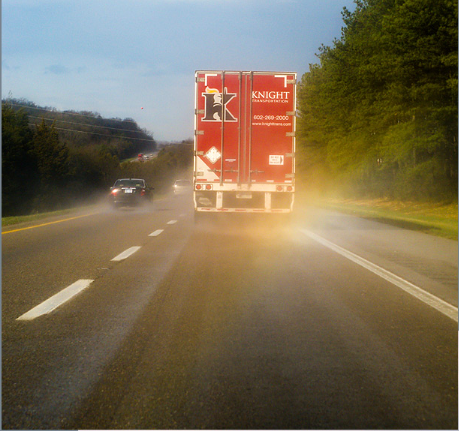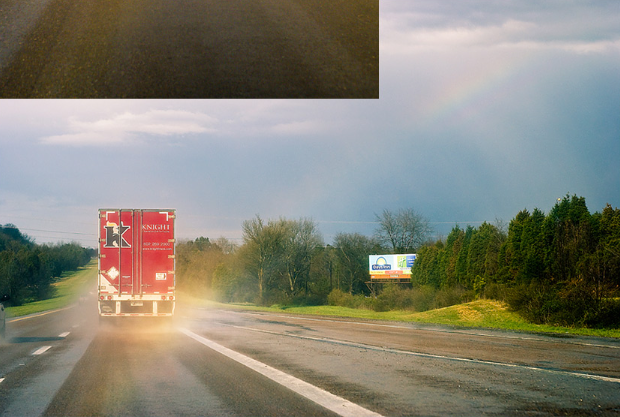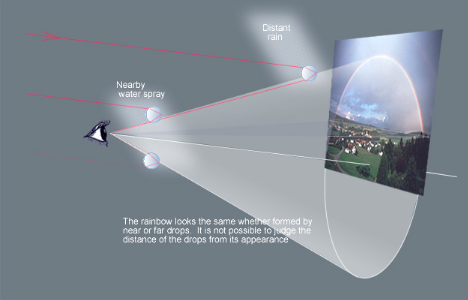How far is the rainbow?
How far is the Rainbow?
Have you ever wondered how far away a rainbow is? It's a fascinating question that often leaves us perplexed. When driving alongside a thunderstorm, witnessing a rainbow forming and disappearing in the mist can be a mesmerizing experience. But how do we determine the distance of a rainbow? The truth is, a rainbow has no physical existence and therefore has no distance or size. It is merely an optical illusion created by the interaction of sunlight with water droplets in the atmosphere. Let's delve deeper into the science behind this captivating phenomenon.
The Illusion of Distance
A rainbow is formed when sunlight passes through water droplets suspended in the air, causing the light to refract and reflect within the droplets. As the light exits the droplets, it disperses into its component colors, creating a beautiful arc of colors in the sky. However, since a rainbow is an optical illusion, it has no tangible distance. It appears to be located at a specific point in the distance, but in reality, it is merely a collection of rays intercepted by our eyes.
The Antisolar Point
To understand the concept of distance when it comes to rainbows, we need to consider the position of the observer. When you observe a rainbow, the center of the circle you see lies in the direction opposite to the sun. This point is known as the antisolar point. The rays forming the edge of the rainbow all converge towards this point. Therefore, the distance of a rainbow from your location depends on your position relative to the antisolar point.
Judging Distance through Visual Cues
While a rainbow itself has no distance, we can use visual cues to estimate the distance of the water droplets that create it. For example, if rain or spray is in front of trees or buildings, we can compare their sizes and positions to gain some perspective. Additionally, the size of the water droplets plays a role in the appearance of the rainbow. Smaller droplets, such as those found in spray, create a wider and more diffuse bow. On the other hand, raindrops from a distant storm can also be small, leading to the formation of supernumeraries in the sky.
The Myth of Finding the Pot of Gold
We've all heard the myth of finding a pot of gold at the end of a rainbow. However, since a rainbow has no physical existence, chasing its ends will only lead to disappointment. The location where a rainbow appears to touch the ground is purely subjective and depends on the observer's position. Each person sees their own unique rainbow, and thus, the end of the rainbow remains an elusive and imaginary destination.
Conclusion
In conclusion, the question of how far away a rainbow is doesn't have a definitive answer. A rainbow is an ephemeral and enchanting optical illusion created by sunlight interacting with water droplets in the atmosphere. While we can estimate the distance of the water droplets that form a rainbow through visual cues, the rainbow itself has no distance or size. So, the next time you spot a rainbow in the sky, take a moment to appreciate its beauty and remember that its magic lies in its ethereal nature, defying the constraints of physical distance.

How far is the rainbow?~ Images by Jonathon Stone. �Jonathon Stone.
"My sister and I were driving alongside a thunderstorm a few miles south of Knoxville, Tennessee. The storm had just passed the interstate and we could see a faint portion of a rainbow off in the distance. Then something cool happened; a rainbow began to form in the mist of the vehicles in front of us. It soon turned into a full spectrum appearing and disappearing in the mist.
What was really interesting though, when the trees cleared we could see that the two rainbows were connected around the same point and actually one rainbow! Though one seemed just ahead of us and one miles away!"

It is impossible to say how far away is a rainbow because it has no distance, no size or indeed real existence. It is purely a collection of rays from glinting water drops that happen to be intercepted by your eye.
It is valid, however, to ask how far away are the water drops forming it. But even then there are difficulties.
A rainbow formed by raindrops a few miles away is exactly the same (provided the water drops have the same size) as one made by nearby spray. The rays forming the rainbow's edge all lie along the same cone extending from your eye with an axis pointing towards the antisolar point.
To judge the drop distance we need other visual cues. Sometimes the rain or spray is in front of trees or buildings.

Spray usually has smaller droplets and these give a wider more diffuse bow. That behind the truck is broader.
But distant rain can have small droplets too - notice the supernumeraries in the sky at right. Small raindrops produced them.
And if the rainbow has no distance, no size, we can never find those pots of gold at its ends.
Note: this article has been automatically converted from the old site and may not appear as intended. You can find the original article here.
Reference Atmospheric Optics
If you use any of the definitions, information, or data presented on Atmospheric Optics, please copy the link or reference below to properly credit us as the reference source. Thank you!
-
<a href="https://atoptics.co.uk/blog/how-far-is-the-rainbow/">How far is the rainbow?</a>
-
"How far is the rainbow?". Atmospheric Optics. Accessed on November 26, 2024. https://atoptics.co.uk/blog/how-far-is-the-rainbow/.
-
"How far is the rainbow?". Atmospheric Optics, https://atoptics.co.uk/blog/how-far-is-the-rainbow/. Accessed 26 November, 2024
-
How far is the rainbow?. Atmospheric Optics. Retrieved from https://atoptics.co.uk/blog/how-far-is-the-rainbow/.